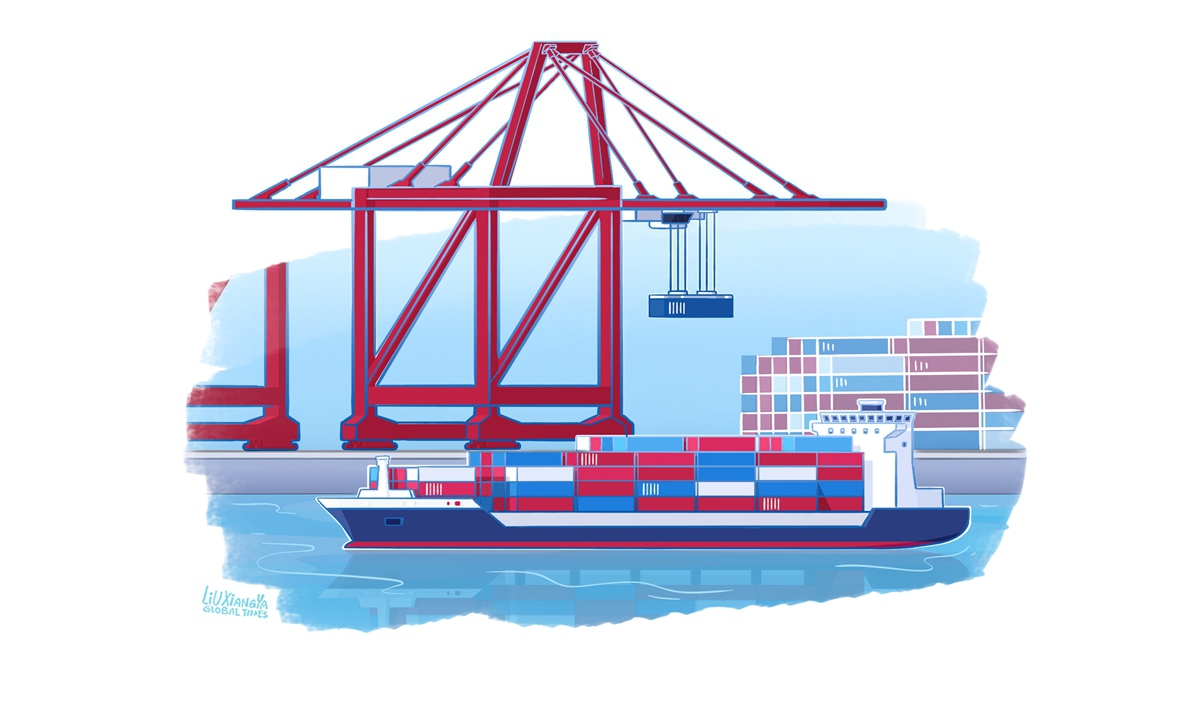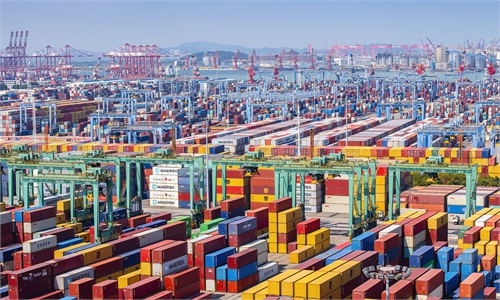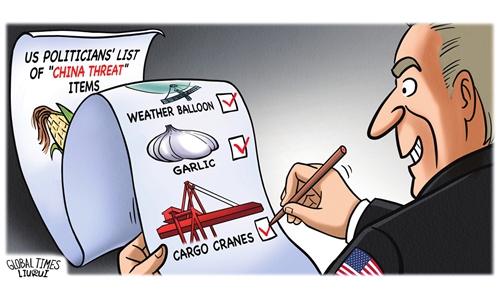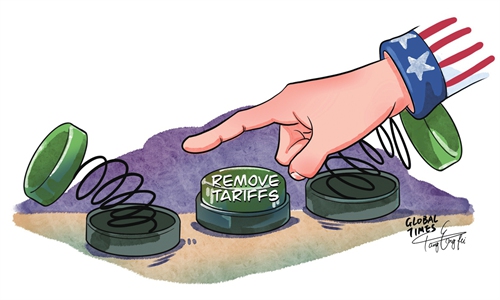
Illustration: Liu Xiangya/GT
It appears that the US Trade Representative (USTR) office is planning to stage another political show over tariffs on Chinese-built cranes. However, the strong opposition from its domestic sector shows that a policy prioritizing political posturing over economic reality is fundamentally unviable.Import tariffs imposed on Chinese-built cranes could cost key US cargo handling facilities nearly $6.7 billion and inhibit infrastructure investment, according to the American Association of Port Authorities (AAPA), which represents 81 ports across the country, Bloomberg reported on Tuesday.
Testifying on Monday at a hearing in Washington on the USTR office's proposal to levy a 100 percent tariff on Chinese-made port cranes, Cary Davis, chief executive officer of the AAPA, said that "Ports would have no choice but to pay these tariffs or drastically scale back their port modernization plans."
The industry's opposition is entirely justified, as the proposal clearly disregards economic reality and potential consequences. If anything, it lays bare the hysteria and foolishness of some in Washington in the quest to demonstrate toughness toward China.
The global port crane industry is dominated by China. The heavy-duty cranes produced by China hold a share of 70-80 percent in the international market. Of the cranes used in various ports in the US, more than 200 were manufactured in China, accounting for nearly 80 percent of the total, according to media reports. And there are no US producers of ship-to-shore cranes, as Davis said at the hearing, the Nikkei Asia reported on Tuesday.
This means that for US ports that need cranes for cargo handling, viable alternatives are non-existent in the short term. The direct consequence of imposing tariffs will be a sharp rise in port operating costs. Operators will face a dilemma: Either bear the high tariff costs or scale back their equipment procurement.
Moreover, the costs will spread across the entire supply chain. As a crucial component of international trade, any increase in port operating costs will inevitably be passed on to related industries and ultimately to businesses and consumers.
Furthermore, the US port modernization plan is already facing numerous challenges such as funding shortages and slow technological updates. The imposition of tariffs is bound to further delay the modernization of US ports' infrastructure.
Washington is unlikely to be unaware of these potential consequences, yet it still chooses to push forward with this proposal. This indicates that the tariff proposal is a result of weighing political interests against economic costs. Despite strong industry opposition and the inability to break away from dependence on Chinese equipment in the short term, the need to show a tough stance toward China and cater to domestic political narratives has temporarily overridden actual economic interests. However, the fact that the cost of this strategy will be borne by US ports and consumers further underscores the contradictions in Washington's "decoupling" push.
The reality is that the US cannot quickly revive its domestic crane industry or impede China's innovation and development in this sector. After years of advancement, China's infrastructure products have established significant advantages in technology, cost and market competitiveness, positioning them well in the global market, including the US. Rather than diminishing China's standing, US suppression and containment measures are likely to stimulate its independent innovation and industrial upgrading, a trend that has been seen repeatedly in the past.
Any attempt to pressure or coerce China by playing tough will not work. China has the firm ability and determination to safeguard its legitimate interests, as vividly demonstrated in the recent interactions between the two countries.
From a broader perspective, attempts by the US to impose tariffs on Chinese cranes reflect the fundamental dilemma in its China strategy. The US wants to curb China's key position in the global industrial chain, but in terms of industrial realities and economic laws, this will only make it pay a greater price, which is why such a policy is doomed to fail.



